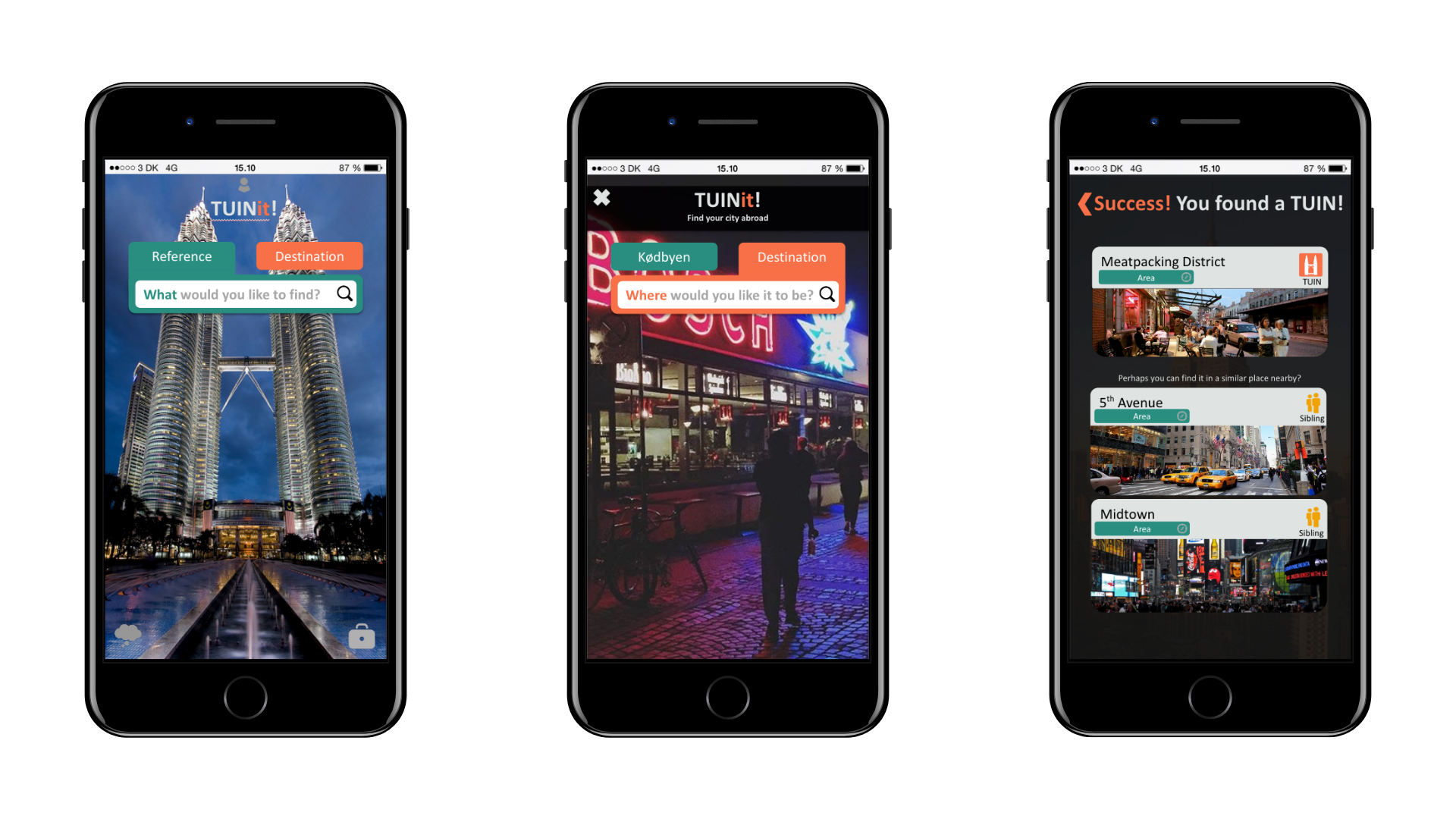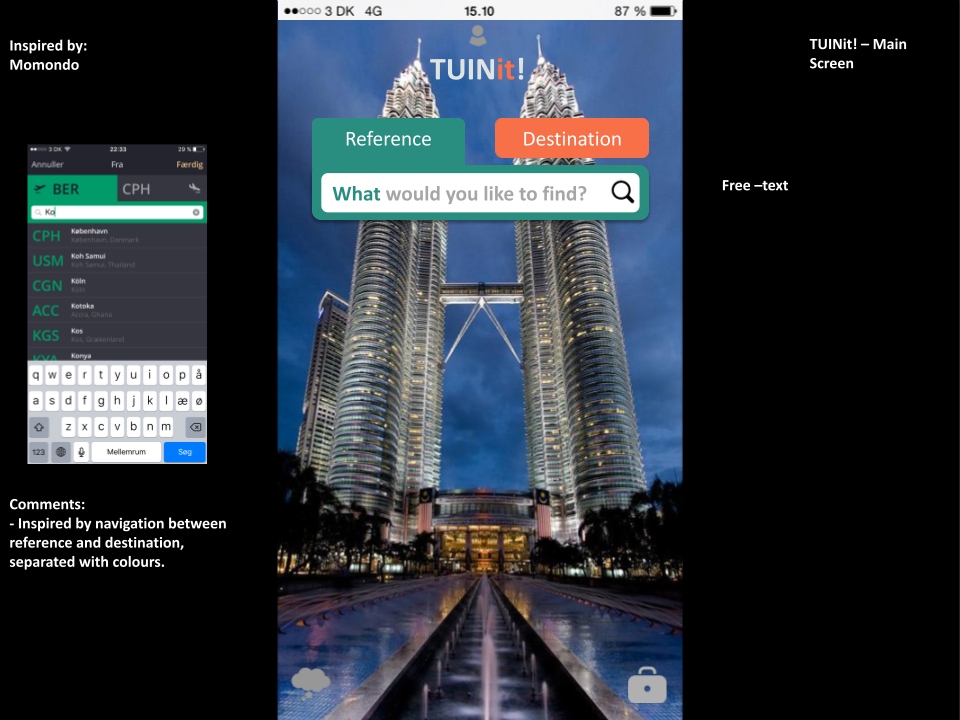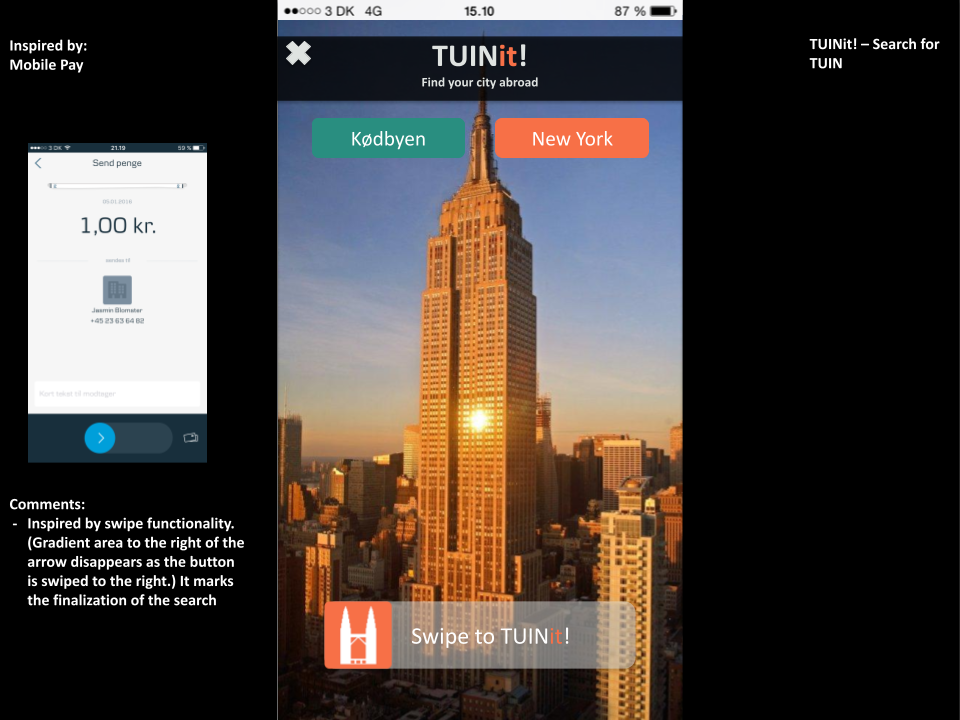TUINit.
A similarity based city travel app.
The search engine helps you find places abroad, based on your desired reference
and the similarity between that and the place you want to go.

My role
Founding this side hustle during my time in corporate, I developed the concept through conversations with other travellers. Knowing only Excel and Powerpoint at the time, I went from wire framing to clickable prototype in Powerpoint, supported by an Excel model that could perform the intended algorithm. I found an app development agency in Pakistan that could help me code the front- and backend. Over the course of 1.5 years I facilitated the development, incl. requirement specification, sprint planning and quality assurance, until we launched the mobile app in App Store and Google Play.
Product
In 3 simple steps the users can find a recommendation for a place that is very similar to something they like in a place they know. Firstly, the user provides the engine with a reference place, e.g. an Italian restaurant in his/her home city. Secondly, the user chooses the destination in which he/she would like to find a similar restaurant. The engine then runs a comparison across parameters, such as cuisine, atmosphere and price level in the back. Lastly, the user is recommended a “twin” and a few “siblings”, places that somehow matches the desired criteria.
Evolution (origin story)
Roaming around in Amsterdam, my friends and I found ourselves ending up in one tourist trap after another. Our understanding of the city was that the vibe would be very similar to our home town, Copenhagen. “So where is the Meatpacking District of Amsterdam?” We asked each other. So I Googled it: “Meatpacking District in Amsterdam.” Found nothing.
The point was not necessarily to find the exact place, but rather to find the x of y, where x is a place that we know and like, but in the setting of a new city, y.
A good alternative to this, would be to look up places on Tripadvisor. However, your search will result in recommendations based on other people’s ratings of that place. Who says that you have the same preferences as those people?
The key to eliminate the subjectivity, was to ask the users to make the reference themselves. We found countless examples of this when talking to users. To describe a certain place to a friend, they would typically compare it to a common reference place. This was a way more simple way to communicate, as the descriptives were embedded in the reference.
Rather than rating the places, all we had to do was to link the places and measure their similarity. Sounds simple, right?
Truth is, the greatest challenge proved to be that of the chicken and the egg, i.e. how to acquire all the data points without the users, and vice versa.
Special thanks to…
Milestones
Launched first app in App Store and Google Play.
Granted access to Visit Denmark’s database.
Became the most sought after project in the development agency.
Key takeaways
This was my first side hustle with a tech product, and it is probably obvious to you by now that I didn’t have much else than just a good idea. And although it took me way too long to realise that, I learned a lot in the process.
The novice will tell you that they have a great idea. When you then ask them what it is, they go: “It’s an app!” I can laugh at this now, cause that was me back in 2014. But after spending roughly $5k building one, I learned that an app is not an idea - it is a way for you to share your idea with the world. However, there are so many other ways to get you off the ground - without breaking the bank.
Be aware of the chicken and the egg. You need to have a clear strategy for how you intend to acquire your data AND your early users - and in which order. To demonstrate your value proposition, you can definitely do it with a manually operated, low fidelity prototype. Spending months mapping, linking and photographing places across multiple cities was probably overdoing it a bit - but I enjoyed the discovery and exploration.




